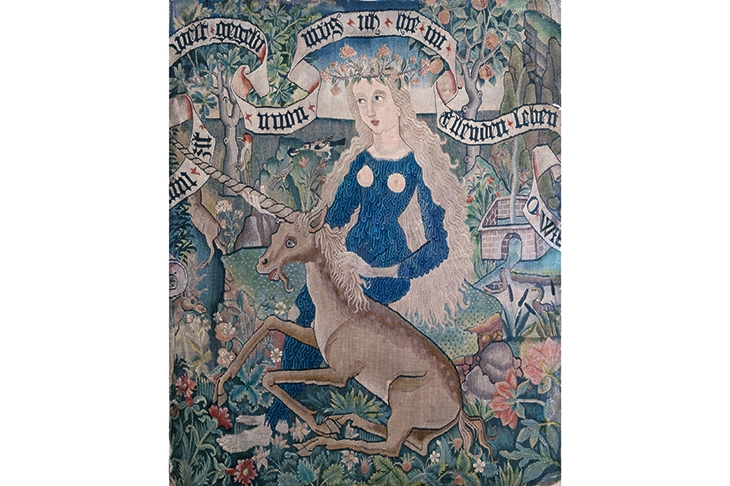After the England football team beat Tunisia at this summer’s World Cup, they celebrated with a swimming-pool race on inflatable unicorns. Purple hooves, rainbow manes, cutesy eyes, yellow horns like upended Cornetto cones. The millennial unicorn is unrecognisable from the medieval. The proud unicorns of bestiaries and courtly romances have become the twinkling Bambis of Instagram. Search #unicorn (more than nine million posts) and canter into a pastel clearing of long lashes, swishy tails and crystal horns. ‘My favourite colour,’ announces one unicorn, pink, prancing, wide-eyed, ‘is glitter.’ Compare the simpering My Little Unicorn of the emoji palette with the noble creature in the ‘Unicorn Tapestries’ (c.1500), which hang in the Metropolitan Museum Cloisters in New York. Here, the unicorn, bucking and furious, pursued by chasseurs and hounds, uses its horn to lance the soft underbelly of one of the dogs. Blood spills in the millefleurs forest.
The unicorn has always been a shape-shifter: hunter and hunted, wild and tamed, a symbol of feminine stillness and masculine quest, of chastity and insatiable desire (‘My, what a big horn you have…’), but never has the change been as startling, or sparkling, as in the past few social-media years. The unicorn’s elusive nature is finely illustrated by Magic Unicorns, a ravishing exhibition at the Musée de Cluny in Paris. The show, with the ‘Lady and the Unicorn’ tapestries (c.1500) at its heart, takes us from the ancient Greek doctor Ctesias to the fluffy pencil-cases of today’s unicorn-crazed schoolgirls. In Indica, Ctesias, physician to King Artaxerxes II of Persia, collected stories from the Silk Road. He described wild asses as large as horses with white hides, red heads and white, black and flaming red horns a cubit in length that had the power to cure convulsions and epilepsy and to protect against poisons. Ctesias’ unicorn was swift and almost impossible to capture.
As tales of fantastical beasts came to the west from China, India and Pakistan, the unicorn (unus — one; cornu — horn) took on the characteristics, according to the teller, of the donkey, horse, antelope, goat, bull, oryx and rhinoceros.









Comments
Join the debate for just £1 a month
Be part of the conversation with other Spectator readers by getting your first three months for £3.
UNLOCK ACCESS Just £1 a monthAlready a subscriber? Log in